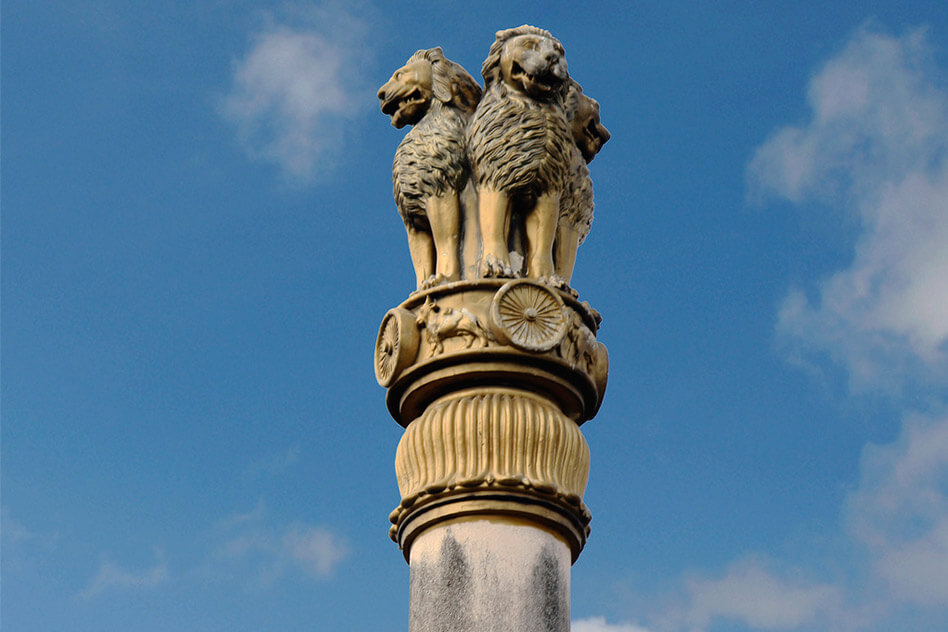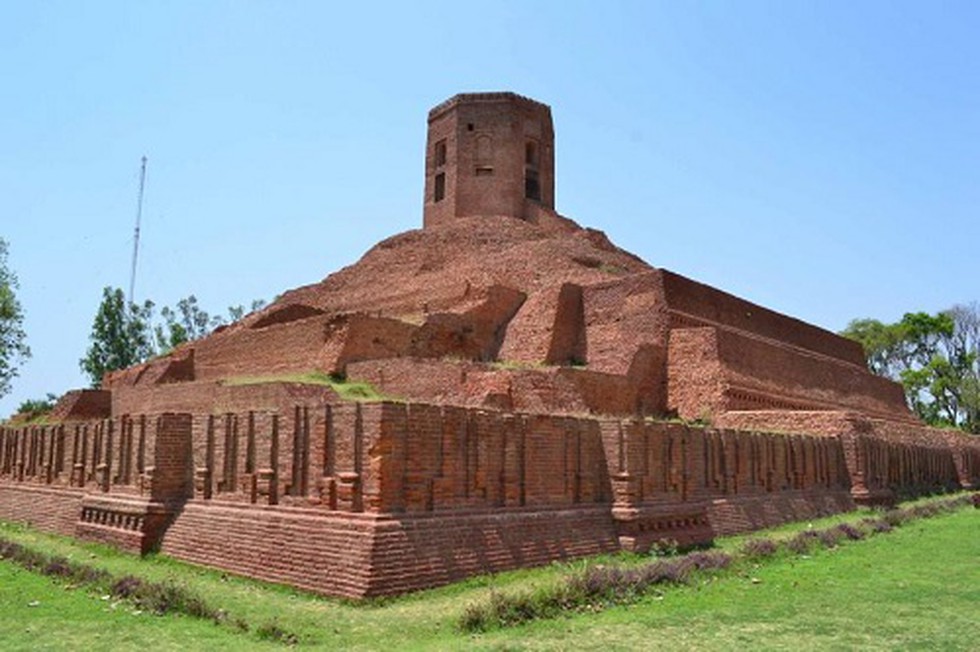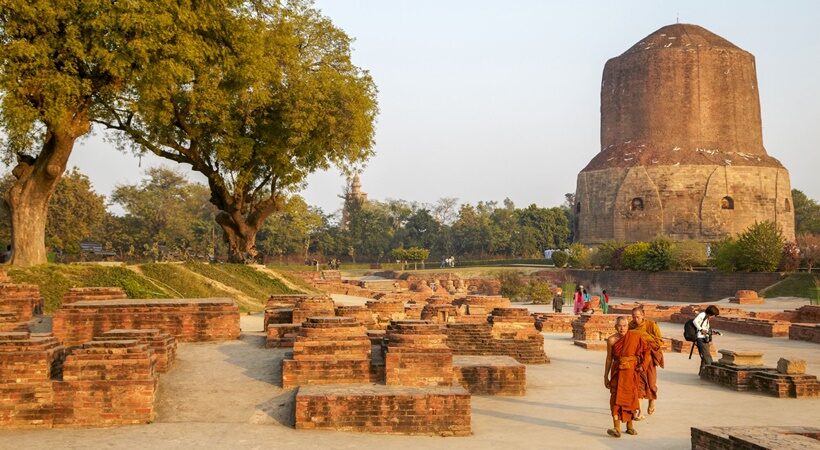Sarnath (along with Bodhgaya and Kushinagar in India, and Lumbini in Nepal) is one of the four most important Buddhist pilgrimage destinations in the world. It has special significance because it’s the place where the Buddha gave his first sermon. From then to the 12th century CE – nearly 1,700 years – it remained a centre of great learning, a place of pilgrimage and a vihara (monastery) for monks and scholars.
Situated 10 km north-east of Varanasi, near the confluence of the Ganga and Varuna Rivers in Uttar Pradesh, Sarnath was initially known as ‘Isipatana’ (‘Mrigadava’ or ‘deer park’), where the holy men landed in the early Buddhist Pali text. It is at this deer park, a part of which still exists adjoining the archaeological complex at Sarnath, that the Buddha is believed to have delivered his first sermon after he attained enlightenment under a Bodhi tree in Bodh Gaya, in the 6th century BCE.
After Buddha attained enlightenment at Bodhgaya, he travelled to Sarnath and preached his teachings here for the first time. In Buddhist canons, Buddha’s first teaching is known as the Dharmachakrapravartana Sutra, meaning the ‘turning of the wheel of law’. One of the most important teachings in Buddhism, through Dharmachakrapravartana Sutra, Buddha expounded the Four Noble Truths. They are the truth of suffering, the truth of the cause of suffering, the truth of the end of suffering, and the truth of the path that leads to the end of suffering.
The ruins of the Dharmarajika Stupa. Source: Wiki Commons
After the famous Battle of Kalinga, when the Mauryan emperor Ashoka embraced the Buddhist faith, he began building several monuments at Sarnath, one of which was the Dharmarajika Stupa, which was crowned by a monolithic railing. Ashoka also installed a pillar topped by a lion capital with a crowning Dharmachakra here. This lion capital was later adopted by India as the national emblem. The stupa which stands tall at Sarnath today is the Dhamekh Stupa, which also seems to have had its origin in Ashoka’s time. The stupa is inscribed with a broad course of elaborate carving with geometrical and floral patterns combined with birds and human figures.

Image Credits: The Mysterious India
Under the Guptas (3rd-6th century CE), Sarnath saw a lot of activities and art flourishing. The Chinese monk Fa-Hien, who visited Sarnath during the period of Chandragupta II (390 CE), reports that there were four stupas and two monasteries here. The Dharmarajika Stupa seems to have been enlarged and the Dhamekh Stupa was encased with floral designs carved in stone.

Image Credits: Vajiram IAS
Another notable structure at Sarnath is the Chaukhandi Stupa, a brick structure crowned with an octagonal tower. Fascinatingly, the octagonal tower is a Mughal monument built by Govardhan, son of Raja Todarmal (governor under Emperor Akbar) in 1588 CE. It was built to honour a visit by Emperor Humayun to Sarnath.
Sarnath today is one of the most important heritage sites in South Asia. In Sarnath, the remains of the Dharmarajika Stupa are truly remarkable. Unfortunately, the stupa was pulled down by Jagat Singh, the Diwan of the Banaras king, to be used as building materials for the construction of a marketplace in the city. Along with the Dharmarajika Stupa, the Dhamekh Stupa, Ashokan pillar, and the remains of monasteries and votive stupas, Sarnath reflects the evolution of Buddhism and its heritage for more than a millennium and a half.



















